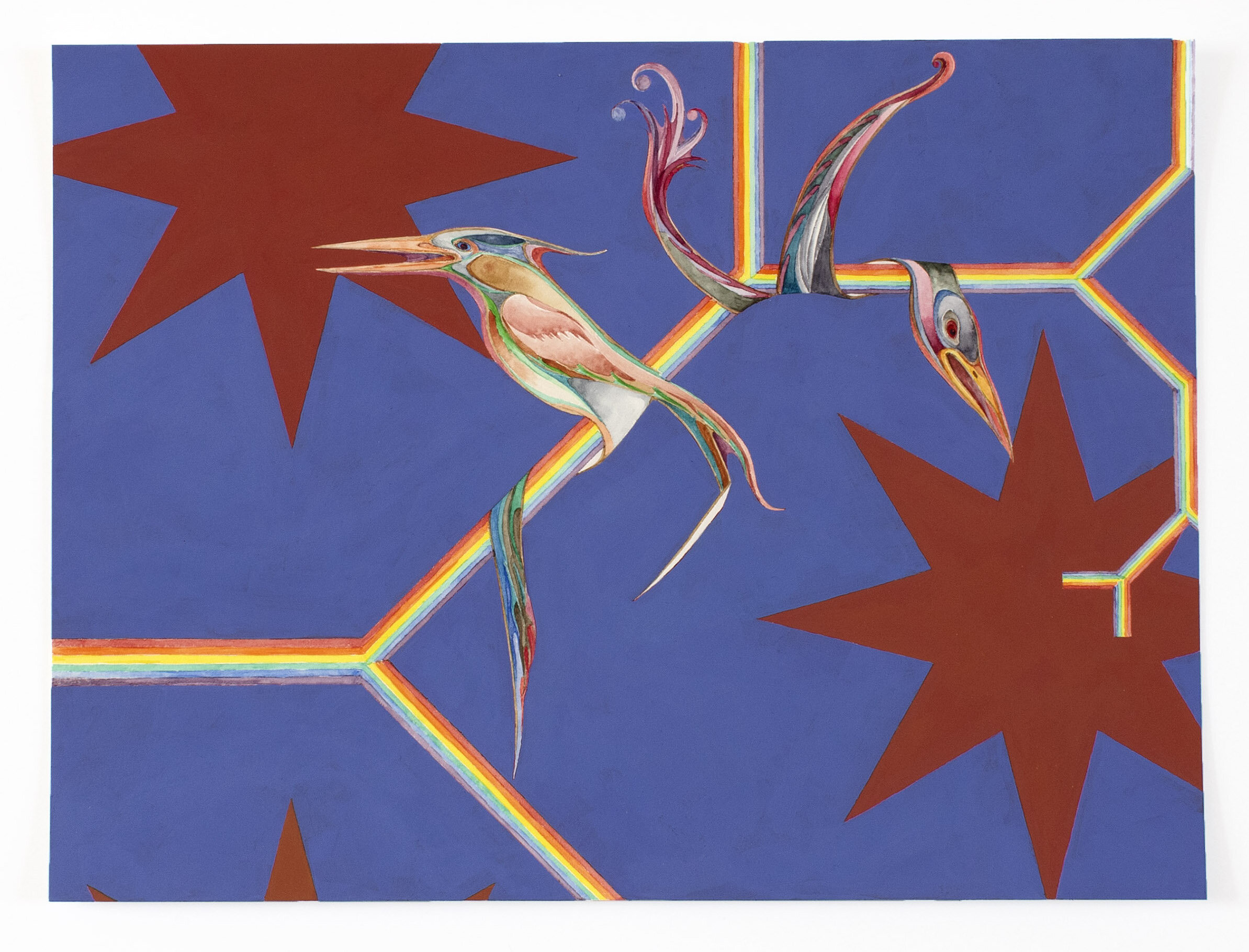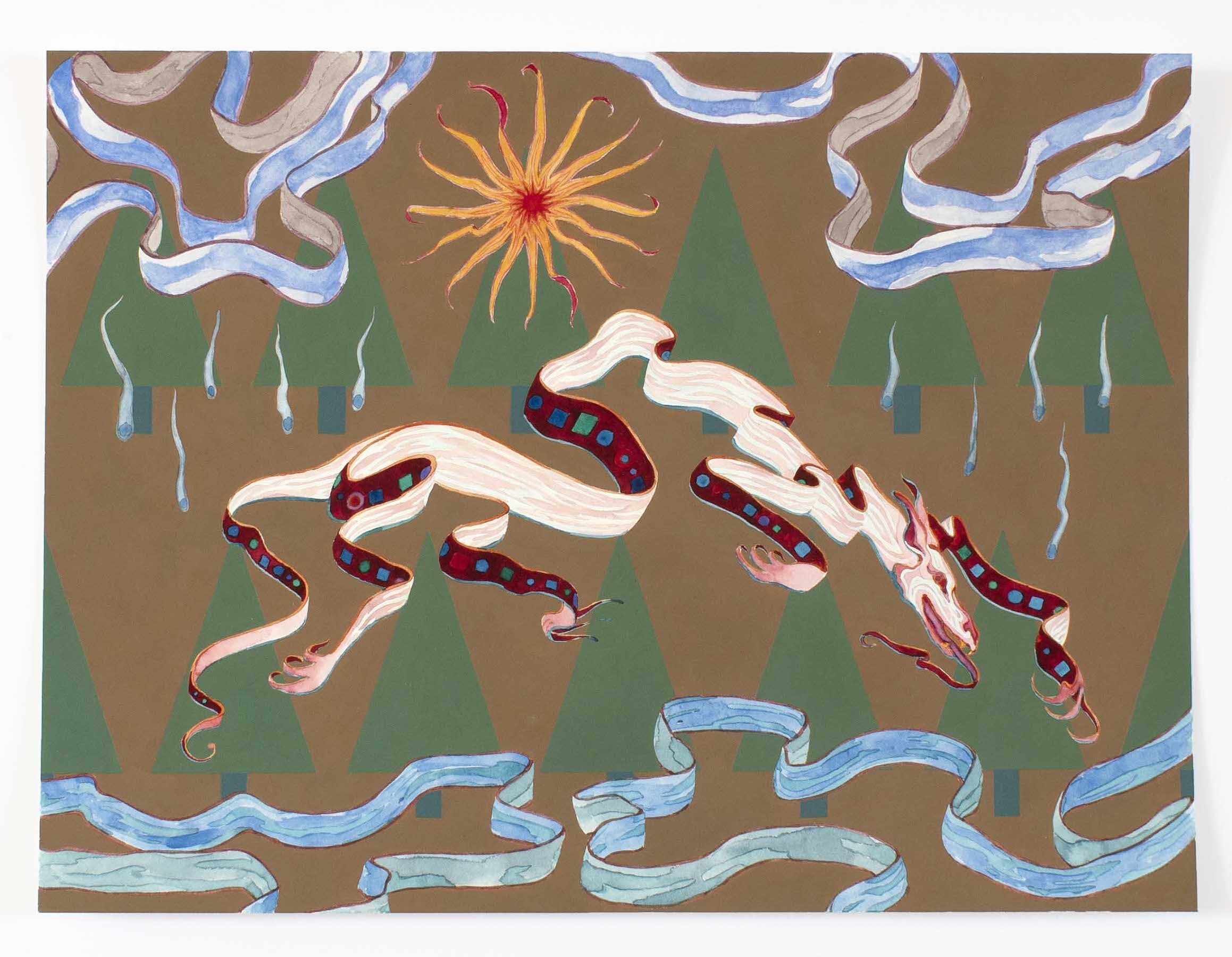In collaboration with David Lewis Gallery, Le Maximum is pleased to present Greg Parma Smith, Interior Landscapes from Love's Dimension. In the following interview, Smith discusses his new drawing series and the challenge and promise of art in the time of COVID. Visit https://davidlewisgallery.com/ for more.
LC:
Let's start off with a bit about the context in which these drawings were made. You are at the epicenter of the global crisis. You haven't been able to go to the studio. What was it like making these at home?
GPS:
I had already bought these materials in anticipation of possibly working from home for a while since Melanie and I are having a baby, who is due any day now. Then the pandemic arrived and forced the situation. All kinds of preoccupations competed in my head, variously enormous and so arcane and selfish. The precious block watercolors I used are handmade with honey in Italy. I kept thinking about the health of the person in Italy who had made them and whether they would continue to be made in the future. Will the honeybees survive? Meanwhile EMTs are arriving outside. Why do I do any of this? Fear is dulling and kaleidoscopic at the same time.
The intensity of this moment further confirmed a change in how I’ve been thinking about what I put out in the world.
LC:
It's tempting to draw a connection between your situation at home and your images of flora and fauna trapped in shallow spaces of cell- and grid-like structures. There's a sense of confinement and also vitality. But really these works expand on the direction you have been moving in the past few years. Aside from your longstanding engagement with materials and techniques, there has been a shift from the human body and subcultural imagery to natural forms as well as allegorical and non-western modes of representation. At the same time, a new level of emotion has entered your work and interacted with your formal experimentation in fascinating ways. I see it in the title of your last show which is also given to these works: "Love's Dimension." Is love a feeling, a shape, a place we can step into? Your games with trompe-l'oeil and pseudodimensional space only deepen this paradox. I guess I'm wondering how you think about the relationship between form and content in these works.
GPS:
It does make sense to speak in terms of allegory. My original idea with this Love’s Dimension work came from thinking about relief and the figure/ground dichotomy on a picture plane. What kind of fragmented, unhappy world is proposed when we differentiate between figure and ground? Between individual and environment? On the picture plane, both are rendered in stony pigments. What if the void “ground” in which the animate “figure” is floating were to be depicted as a thicker, more present substance, inter-existing with the contours of the figure? Neither one in front nor behind. Such that figure and ground are embedded in each other. These are primordial visions for me. All known life in our universe is contained in a paper-thin layer on top of the Earth’s surface, like a thin smear of pigment. I’ve been thinking about the Buddhist concepts of interdependence, impermanence, no-self—that suffering and delusion come from clinging to fixed identities, separate static things, when in fact it’s quite obvious that nothing in the world has that kind of eternal self-ness.
One dimension, two dimensions, three dimensions—a picture plane is another world that is also our world that is claustrophobic and also infinite.
LC:
I think that goes a long way to explain the power and symbolism of these works. Perspective is an ingenious system for projecting three- dimensional space onto a flat surface, but it reduces the world to the viewpoint of the individual spectator. Your drawings on the other hand seem like diagrams of things that can't be seen in their totality– underlying structures or what you call the primordial. This is where allegory comes in. But what's also striking is how your use of grids, geometries, and the idea to collapse figure and ground echo modernist idioms, while clearly ending up as something totally different. Are you intentionally mining this juxtaposition or is the modernist reference just one among many?
GPS:
Maybe it’s a little bit intentional. My own use of materialist, self-reflexive, or formal gestures in painting has always been perverse. Maybe now it’s even gone occult! To invoke allegory again, I like the association of geometric forms with the divine universal, filling the void space around the living figures. A lot of modernist painting draws explicitly on that abstract, sacred, or Platonic energy. But the association predates modernism by god knows how long—maybe it stretches back to the beginning of art-making.
LC:
Mandalas and other cosmographic images certainly come to mind. Also, medieval bestiaries.
So, you've managed to combine these ancient and modern visualities into an aesthetic that is unmistakably contemporary. After all, screens also flatten the world into a surface of drag and drop pictures, as do logos and brand images. Any final thoughts on how art might help us see our distressing times differently?
GPS:
I think everyone has had the experience during this pandemic shutdown of time elapsing strangely, daily and weekly, and the disturbing sense of blankness when looking into the future. Collective anxiety makes our moment seem like the only moment, just like individual anxiety makes one’s feelings seem like the entire universe. Hopefully, art pierces that illusion and reminds us that there have been and will be other moments in the world, that the entire world is not filled up with one’s individual feelings. We need to manifest that sense of community with the past and future to survive happily with our Earth, and we will.


